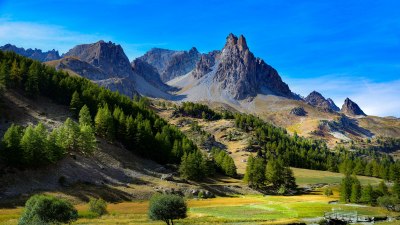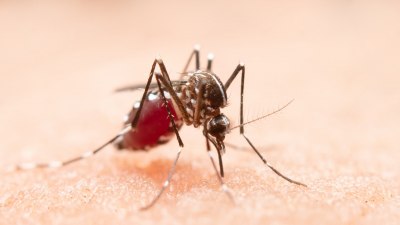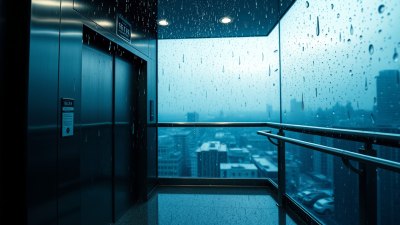The Mystery of Weather Reporters Standing in Dangerous Storms
Explore why weather reporters brave storms for live coverage. Discover their motivations, training, and challenges.

This image was created with the assistance of Freepik
Weather reporters have become a staple of storm coverage, often risking their lives to deliver real-time updates during dangerous weather events. This phenomenon, while puzzling to some, is driven by a mixture of professional obligation, adrenaline, and the public's insatiable curiosity for eye-witness accounts of nature's fury. Understanding the rationale behind this practice reveals a complex interplay between journalism, safety, and our desire for information.
The Role of Weather Reporters
At the heart of the issue lies the fundamental role of weather reporters. As trusted sources of information, their primary responsibility is to inform the public about impending weather threats and provide guidance on safety measures. To fulfill this role, reporters often find themselves in the thick of storms, covering emergency situations firsthand. This live coverage serves as a valuable communication tool, delivering immediate updates to communities in harm's way. But what drives these professionals to put themselves in potentially life-threatening situations?
Adrenaline and Commitment
For many weather reporters, the thrill of being on the front lines during a storm is a significant draw. The adrenaline rush of experiencing extreme weather conditions can be compelling, leading some journalists to embrace the danger as part of their job. However, this desire for excitement must always be tempered with a professional commitment to safety. Most reporters undergo rigorous training to prepare for storm reporting, learning how to assess risks, avoid hazards, and utilize safety gear effectively. Such training is crucial for ensuring not only their safety but also the ability to report responsibly during dire conditions.
Public Demand for Live Coverage
Our modern culture thrives on immediacy and real-time information, pushing media outlets to cater to audiences craving live updates. When a storm is approaching, communities inundate news channels with requests for information, demanding to see exactly what conditions look like outside. This pressure often translates into news segments that include reporters standing in the eye of the storm, regardless of the inherent dangers. News organizations recognize the value of visuals, understanding that video footage of wind, rain, and destruction captures viewers' attention, aiding in driving up ratings. Thus, in an industry where sensationalism can often guide programming, reporters have found themselves pushed further into potentially dangerous scenarios.
Safety vs. Sensationalism
As the demand for visually engaging content continues to grow, a debate arises within journalism about the line between truthful reporting and sensationalism. Some critics argue that news networks prioritize drama over the well-being of their correspondents, essentially creating a reckless environment for reporters. This perception can lead to public outcry against the media, especially when troubling incidents occur, such as reporters experiencing serious injuries while on air. Ethical considerations call into question when the push for audience engagement overshadows the core principles of journalism—providing accurate and responsible coverage. As more news outlets strive to balance ratings against ethical responsibilities, it is essential to evaluate the effectiveness of live storm coverage.
The Reality of Reporting from Extreme Conditions
While some viewers may enjoy watching reporters face fierce winds and torrential rains, many do not realize the extensive preparation that goes into storm reporting. Before heading into the field, many reporters collaborate with meteorologists to update them on conditions and safety protocols. They assess the storm's trajectory, analyze evacuation zones, and stay in constant communication with their newsrooms to ensure they can receive support at any given time. Moreover, factors like terrain, potential debris, and local infrastructure become vital considerations in assessing the best places to report from. With heavily impacted areas struggling to respond to emergencies, the aid these reporters can provide through timely communication can save lives.
Balancing Risks and Responsibilities
The debate about risks taken by weather reporters ultimately raises questions about management responsibilities and ethical considerations in news coverage. News outlets must evaluate their policies to ensure adequate safety measures and contingencies are in place while covering dangerous events. This includes providing reporters with necessary training, equipment, and support, ensuring a balance between compelling storytelling and individual safety. Companies must also foster a culture of open dialogues regarding safety concerns, allowing reporters to express apprehensions without fear of repercussions. When it comes down to the line, it is crucial to remember that the story is essential, but safeguarding journalists’ lives must always remain a primary concern.
The Public's Perception
As viewers, our perception of weather reporters during storms often varies. Some praise their bravery, admiring their dedication to providing accurate updates from the ground. Others critique what they perceive as reckless behavior, expressing concern for their safety while raising questions about their motivations. Social media amplifies this mixed reception, as clips of reporters getting drenched or struggling against winds circulate widely, garnering both sympathy and mockery. This dichotomy showcases the complex relationship between the public and the media when it comes to extreme weather coverage.
Adapting to Future Challenges
The evolution of technology has significantly impacted weather reporting, making it easier and safer to capture extreme weather events without being directly in harm's way. Drones, remote cameras, and satellites allow for real-time coverage without endangering reporters. While these advancements provide more comprehensive data about storms, they should not entirely replace the role of human reporters in the field. The traditional method of storytelling holds value, as it brings a personal touch to the science of meteorology, reminding us of our shared human experience amidst natural disasters.
Ultimately, the phenomenon of weather reporters standing in dangerous storms stems from a complex array of motivations, ethics, and technological advancements. While their willingness to forge into the heart of tempestuous situations can be seen as journalism’s commitment to service, it risks overshadowing the importance of safety in the field. As we continue to consume news coverage of extreme weather, it is vital to appreciate the dedication of these professionals while advocating for stringent safety measures to protect their lives. The next time you witness a weather reporter braving the elements, consider not only the spectacle they present but also the careful consideration behind the scenes to ensure that the coverage remains valuable, ethical, and safe.











